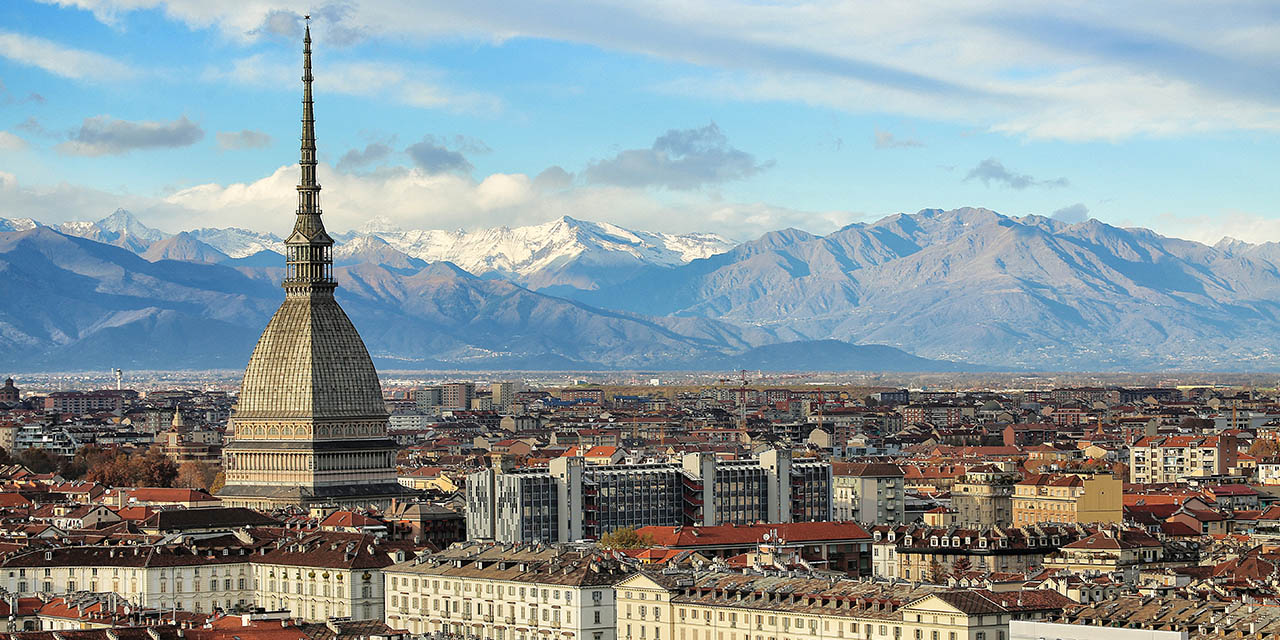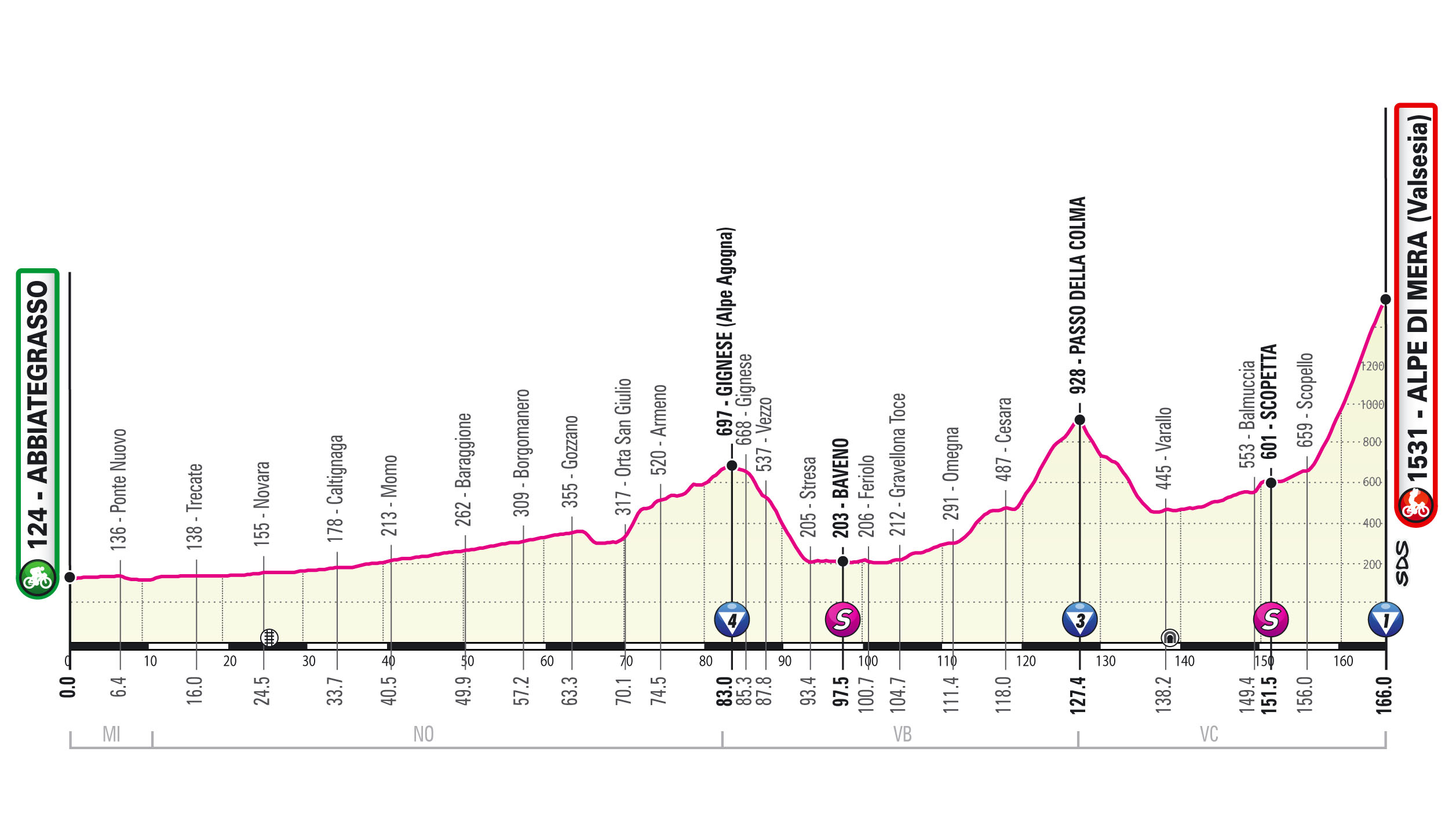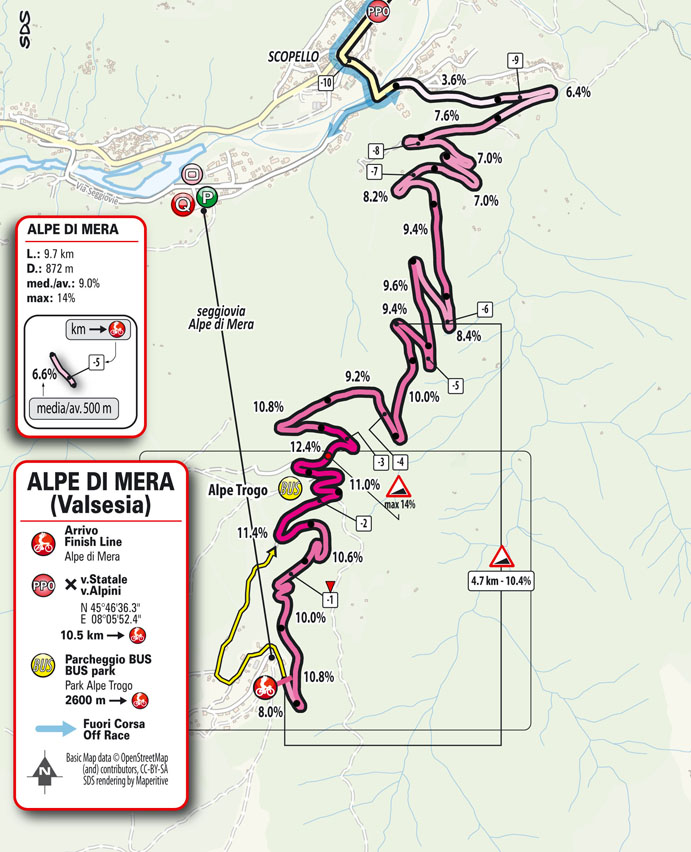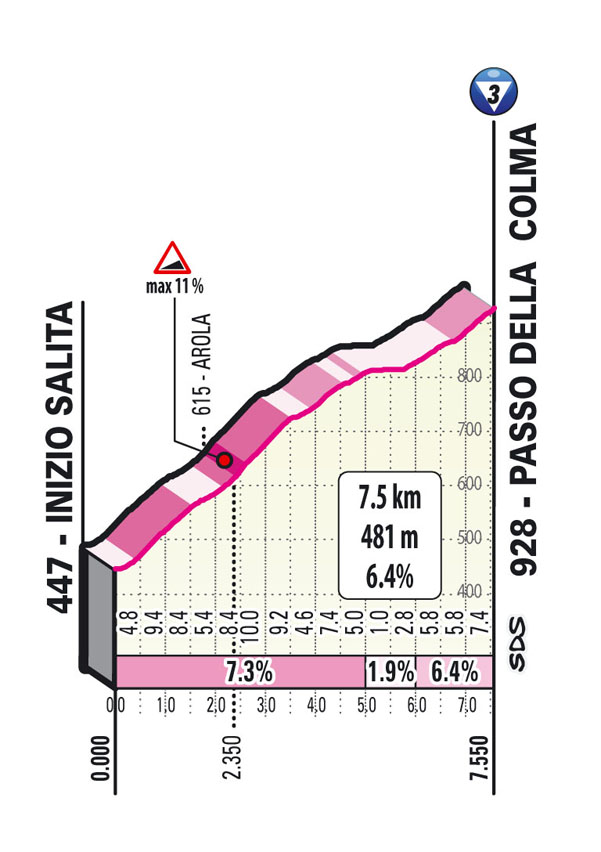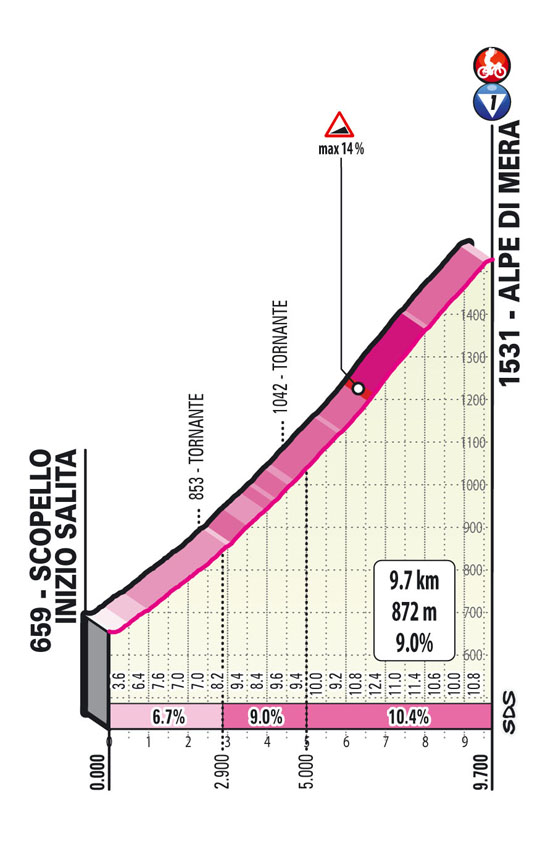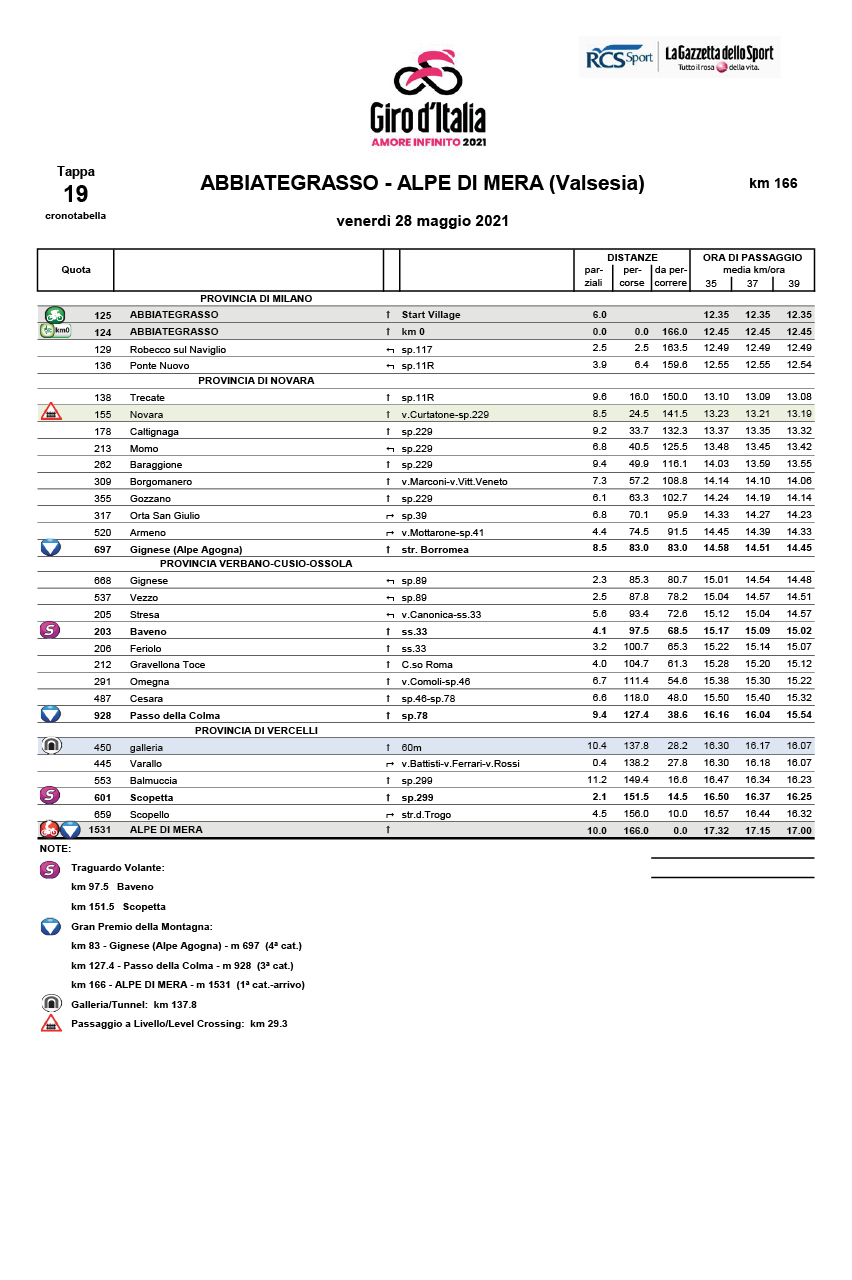profile
map
technical info
A mountain stage featuring a succession of climbs, with lengthy false‑flat drags in between. The route travels the lowland around river Ticino, reaching the foot of the Mottarone. The roadway narrows, and past Armeno the route heads for Gignese, reaching the shore of Lake Maggiore in Stresa. The stage then continues along the lake, passes Gravellona Toce and Omegna, and clears the Passo della Colma. Past Varallo, the route continues along the valley floor up to the foot of the closing climb in Scopello.
Final kilometres
The final climb rises steadily at 9-10% for 10 km, with pitches maxing out at 14%. The road is quite wide, with a number of hairpins. The home straight is on tarmac road.
start / finish
climb detail
final kilometres
itinerary timetable
tourist info
Host city:
Agrigento
Overview
The ancient Greek city of Akragas, later called by the Latins Agrigentum, was founded around 580a.C by a colony of Geloi-Rodiensi, led by the ecists Aristoneo and Pistillo in the plain where today we find the remains of ancient temples and known worldwide as “The Valley of the Temples” (included by UNESCO in the list of World Heritage Sites). Akragas was limited to the west by the Hypsas river (Dragon) and to the south by the Akragas river (San Biagio). The acropolis was built in the place now occupied by modern Agrigento. From the beginning the city had its own emporium on the sea. Today, in the year 2020, celebrations are underway in Agrigento for the 2600 years of history since the foundation of the city.
points of interest
The Cathedral of San Gerlando stands on the Girgenti hill. It was the sign and symbol of the resurgence of the Christian event in the Agrigento area. The mute bells resumed for three centuries under the Muslims.
Since its original construction, the current Cathedral of Agrigento has very little preserved, redone as it has been on several occasions. Only the interior of the basilica retains traces of the Norman layout with its Latin cross plan and three naves, but its structure, both external and partially internal, belongs to various reconstructions over the centuries. The sacristy houses magnificent eighteenth-century wardrobes which contained beautiful sacred vestments currently exhibited in the diocesan museum. Among the paintings in the cathedral the most famous is the “Madonna and Child”, attributed to Guido Reni (1575-1642). It represents the Madonna in the act of supporting the abandoned child in a deep sleep.
Alpe di Mera (Valsesia)
Overview
With its 30 km of groomed slopes, it offers a splendid ski park to all enthusiasts of ski and is a real paradise for athletes. It’s easily reachable thanks to the double access, from Scopello and Alpe Trogo, and to the large parking of the ski lifts. It overlooks the valley from above with a surprising glance and allows its visitors to admire the Monte Rosa massif in all its majesty. This panorama is unmatched in Valsesia! The ski slopes develop from the 1.800 meters of the Cima Camparient down to the 600 meters of Scopello. Tracks are designed on soft backbones that make the station suitable for everyone, from beginners to the most demanding skier, especially for families.
The possibilities of freeride paths in fresh snow are funny and safe and exposure to the sun makes the destination a must and favorite destination.
Alpe di Mera snowpark offers challenging and learning opportunities for skiers and snowboarders who choose freestyle and who literally want to fly over Monte Rosa. The little ones who want to have fun and have their first experiences accompanied by a ski teacher are welcome!











